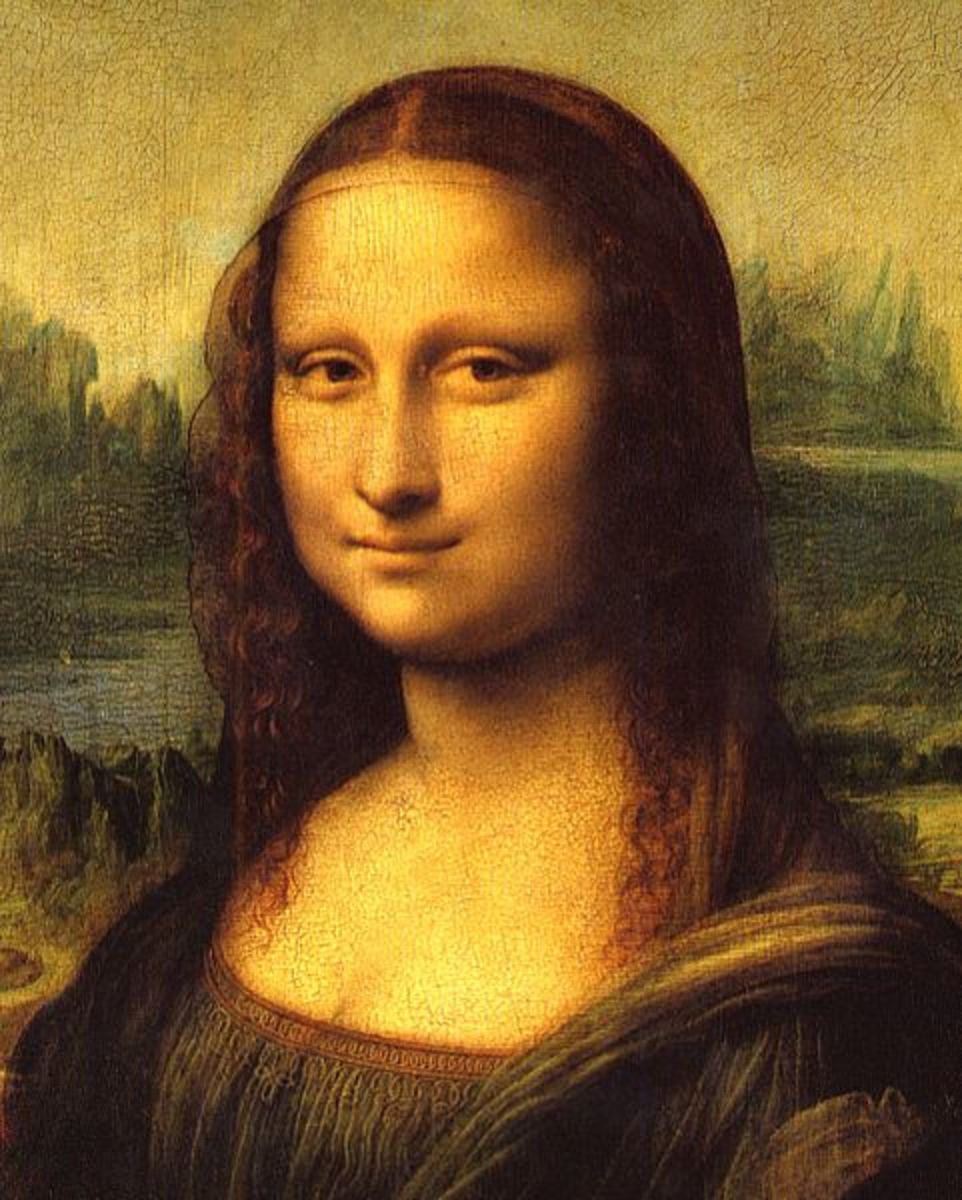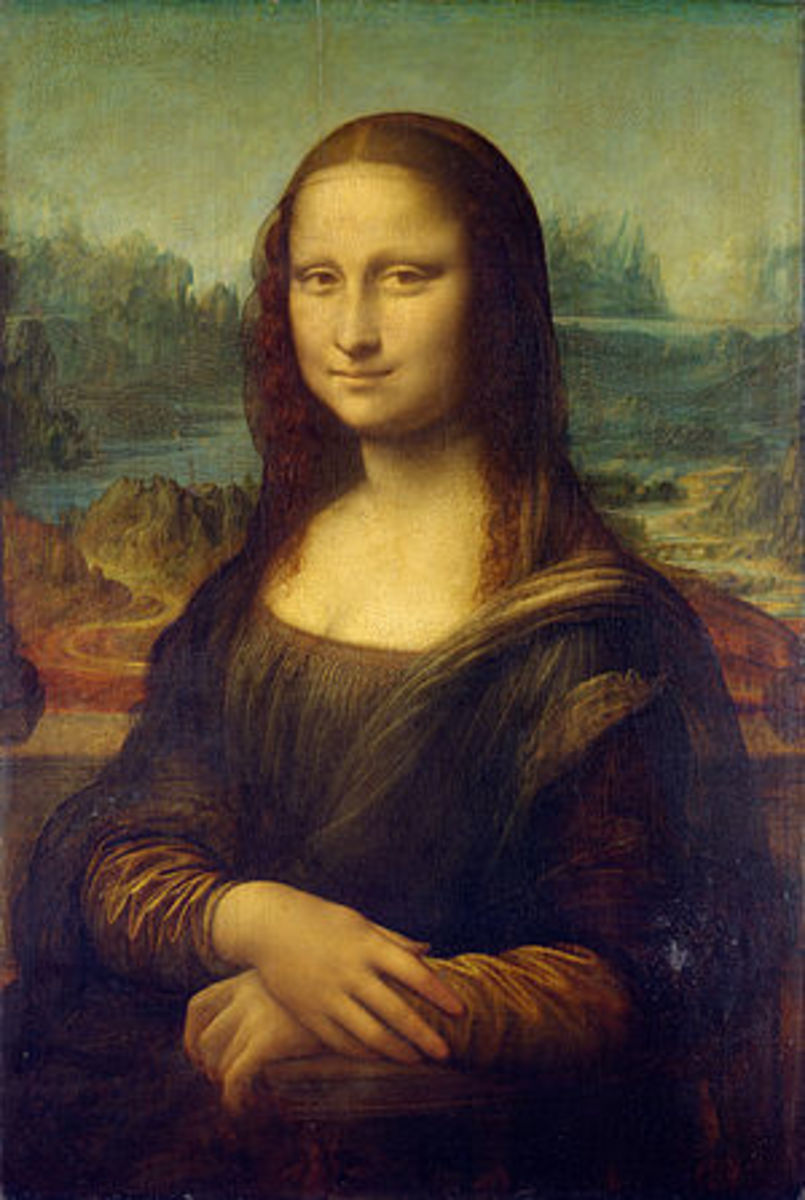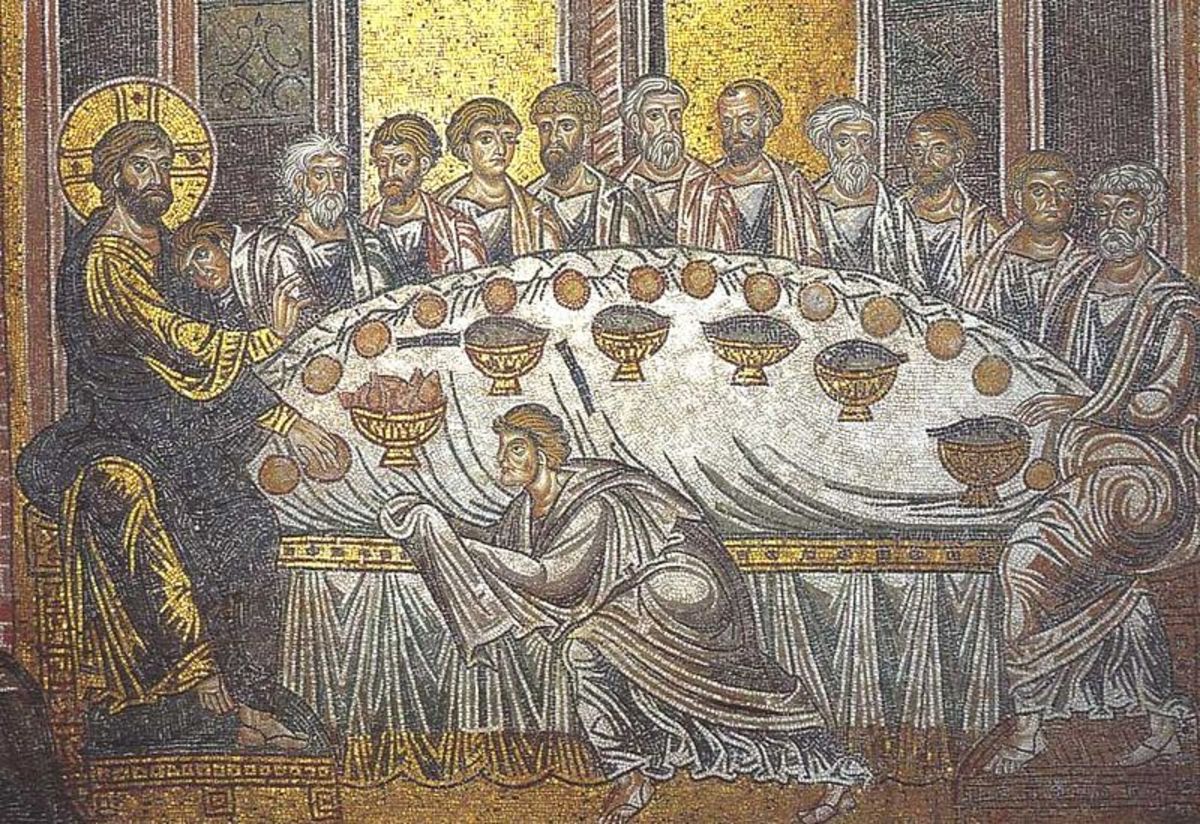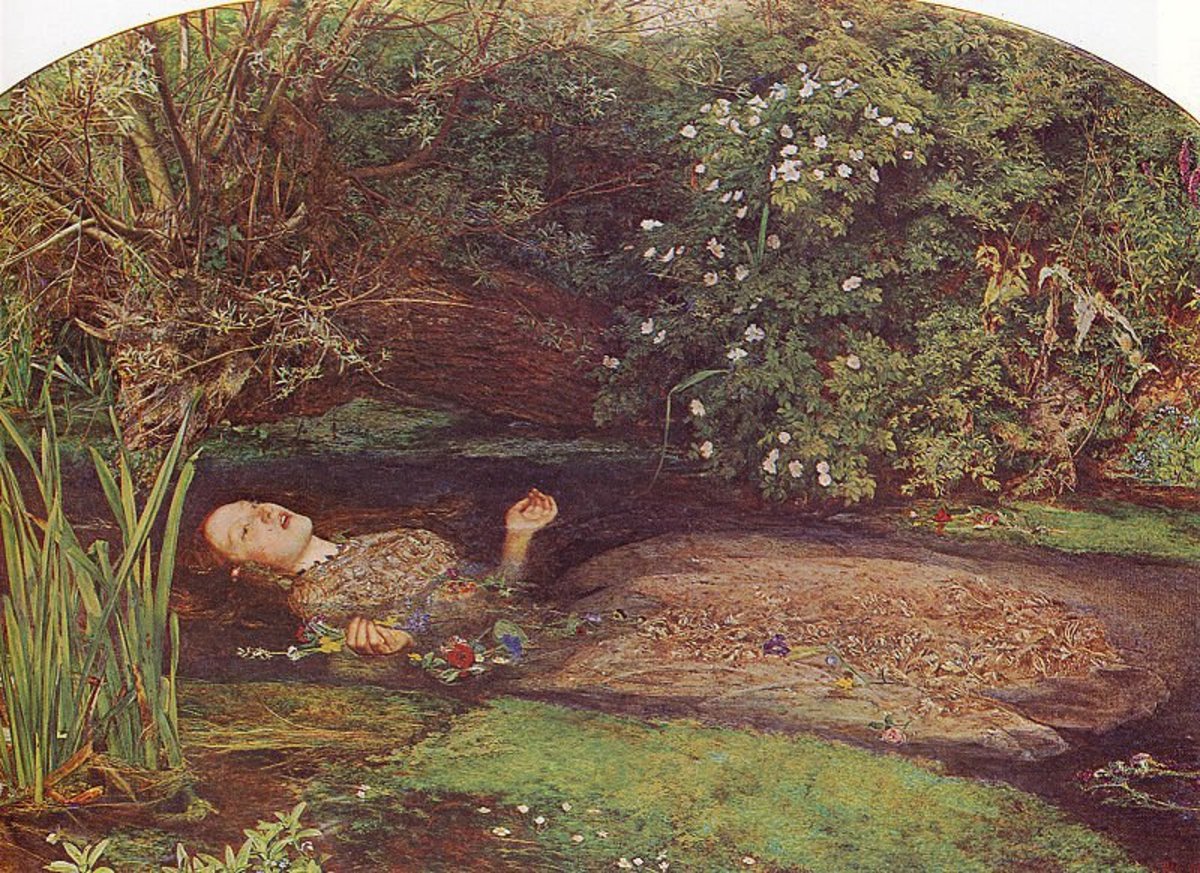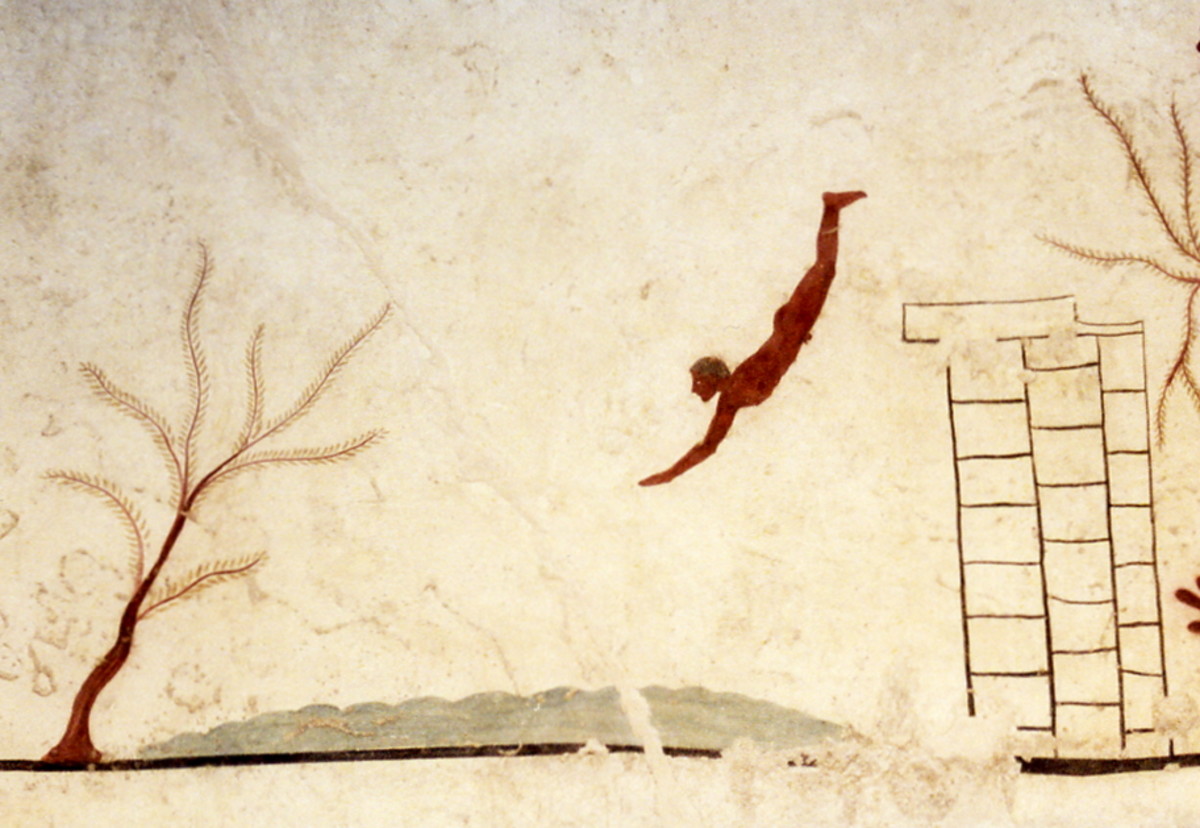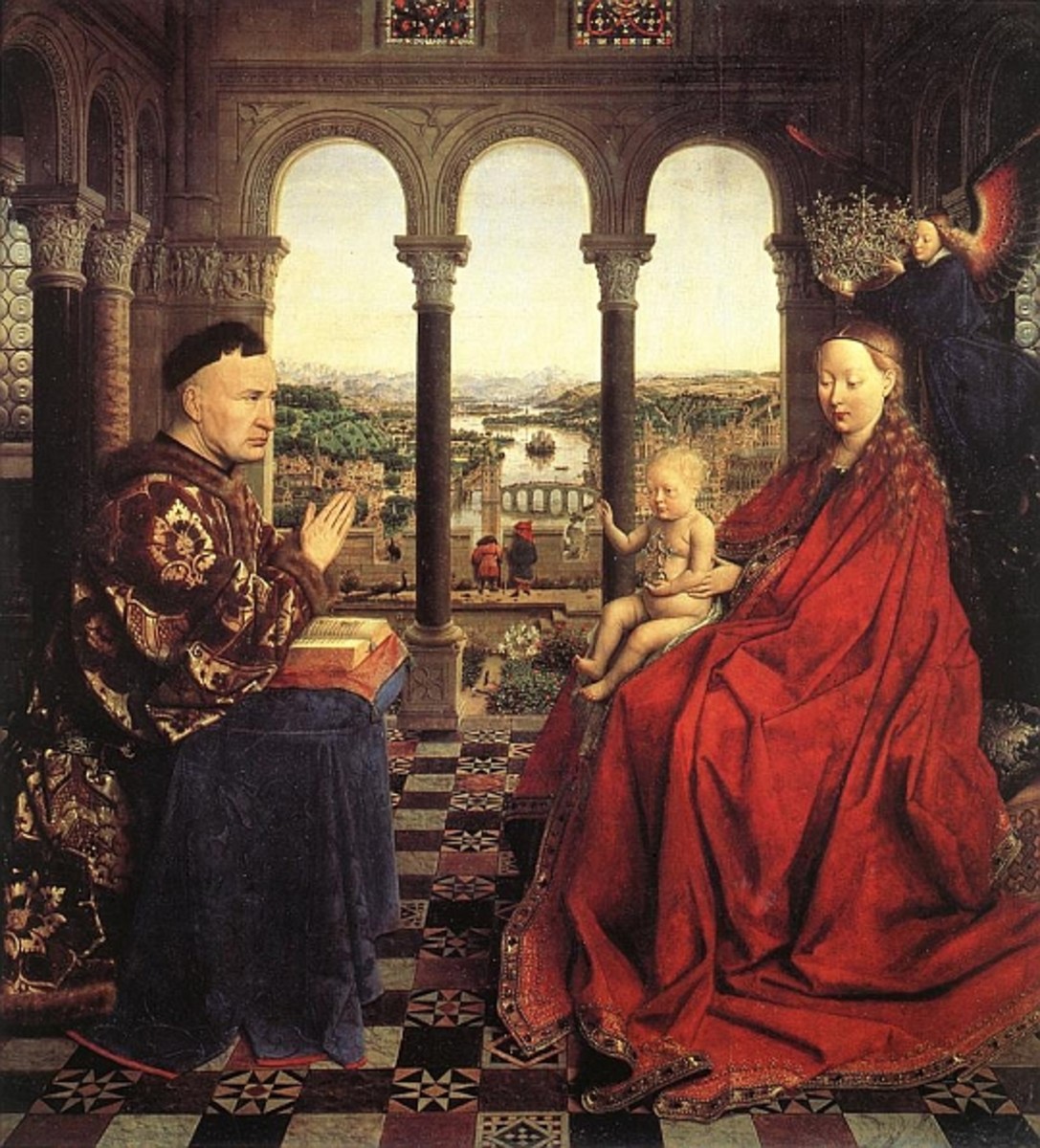The Landscapes in Mona Lisa and Other Celebrated Paintings, with an Alternative Story of the Gioconda
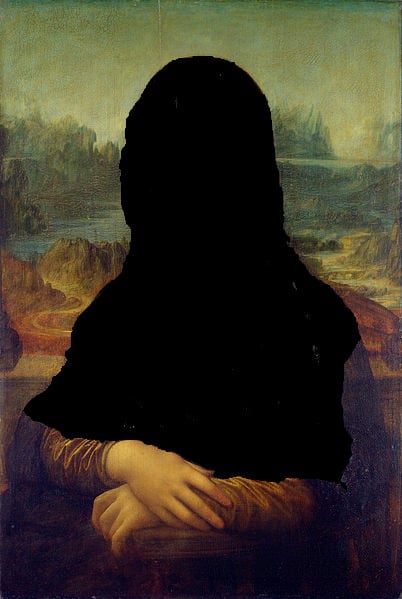
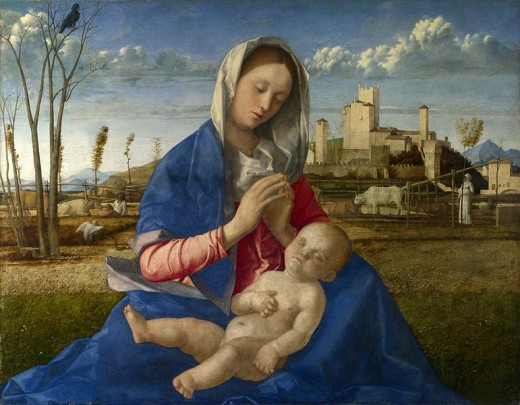
Landscape Hunters
The landscape was not practiced as an autonomous subject in the Renaissance art. The beautiful landscapes that we admire in the paintings of the Renaissance Masters, such as Piero della Francesca and Giovanni Bellini, are just the background of pictures having human figures in the foreground. These landscapes were generally considered due to the fantasy of the artists. However, the patient and tenacious work of some scholars has demonstrated that several of these backgrounds are the exact reproduction of a real landscape. Two of them, Rosetta Borchia and Olivia Nesci, have been so determined in seeking the originals of the landscape painted by the artists of the Renaissance, they have done this activity paying a so great love and attention to the details, to earn the nickname of Landscape Hunters. Their passion has led them to meet an artist and a painting that they never would have imagined: Leonardo da Vinci and Mona Lisa. As many passionate love stories, theirs too has begun by chance. It is worthwhile to be known.
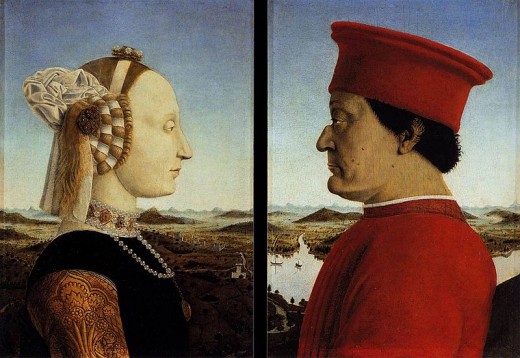
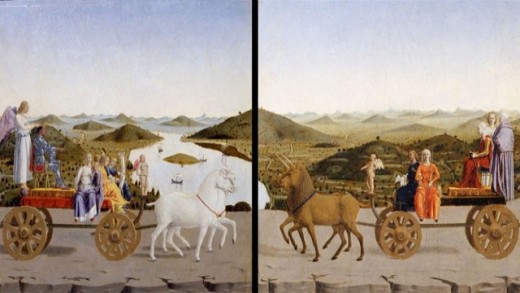
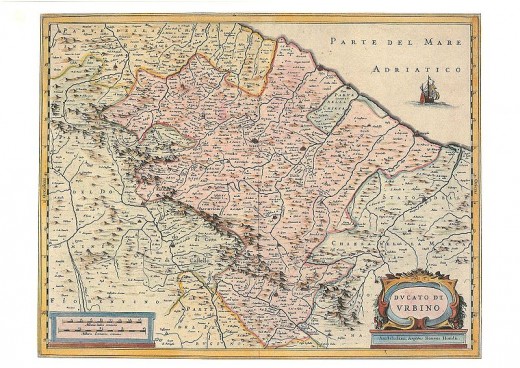
The Diptych of the Dukes of Urbino
Everything has begun on the sweet and sour hills typical of central Italy, in a territory amidst Romagna, Marche and Umbria. Rosetta and Olivia live and work in Montefeltro, the land of Urbino, the former seat of a small Duchy that, as the others in the years of the Renaissance, used to promote the culture and to welcome the artists. Because of different reasons, they are both very attached to this territory. Rosetta Borchia has graduated from the Accademy of Fine Arts. She is a passionate botanist and is conducting a project to recovery ancient roses at risk of extinction. Olivia Nesci is a professor of Geography at the Urbino University. One day in 2007, Rosetta was reordering some pictures that she had taken in the Valley of the river Metauro. Instantly, she saw in her mind that a mountain of the valley, the Mount Fronzoso, is the same depicted in the portrait of the Duke of Urbino, by Piero della Francesa. Since then, she and her friend Olivia started a patient research lasted one year and an half. At end, they had individuated all the elements of the territory painted by Piero della Francesca 500 years before. The landscape that Piero had put in the background of the famous diptych, reproducing the profile of Federico di Montefeltro and his wife Battista Sforza, is the real representation of the territories of the Duchy: the valleys of the rivers Metauro and Marecchia. The same for the landscape painted on the back of the panel, with the blue lake crossed by boats. The lake was artificial, wanted by the Duke at the border of his hunting grounds, maybe to create a humid area suitable for trapping birds. It has disappeared nowadays. It had to be obvious, really, that the landscape depicted behind the Dukes should represent the territories of their Duchy, but nobody had been able to individuate them amidst the mountains and the valleys of the Montefeltro. Piero had watched at the landscape with the eyes of the artist, but also with a political look: the Sasso Simone that belonged to the Medici, has not been represented on the background behind Federico….
The territory of the Montefeltro represented by Piero della Francesca
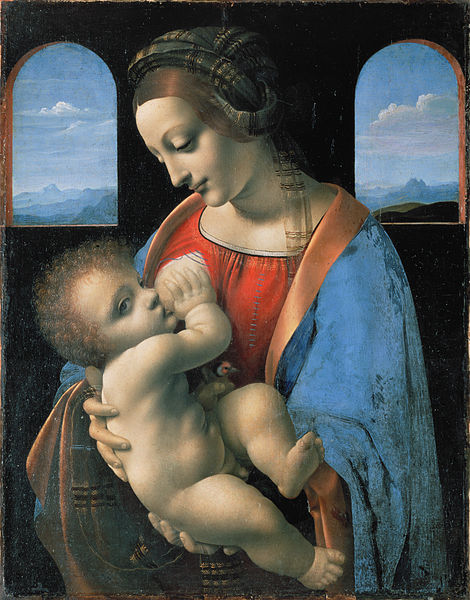
From the Madonna Litta to Mona Lisa
The two women become passionate of landscape hunting. They continue to travel the valley of the river Marecchia and find another unexpected landscape, sprung from the Madonna Litta, a painting attributed to Leonardo or one of his pupils (Boltraffio or d’Oggiono). The two scholars think to have individuated the rocks that appear in the two windows behind the Madonna. They are: the cliff of Maioletto in the left window and the cliffs of Penna and Billi in the right one. Leonardo was in Milano at the court of the Sforza in the years of the painting (around 1490). One may wonder how he or his pupils from Lombardia could know this territory hundreds of miles far from Milano, but the similarity is undeniable. Rosetta and Olivia begin to study the territory to find evidences of their theory. It is in one of the recognitions in the area between San Marino and San Lorenzo, seeking the vantage point for the landscape of Madonna Litta, that the great meeting happens. Rosetta is taking pictures of the Marecchia valley, when a detail of the landscape recalls her attention. Also this time, it is an instant. She sees a bridge upon the river Marecchia between two rocks. There is a bridge upon a river between two rocks in one of the most famous paintings in the world: Mona Lisa, the Gioconda. The two spots may be the same.
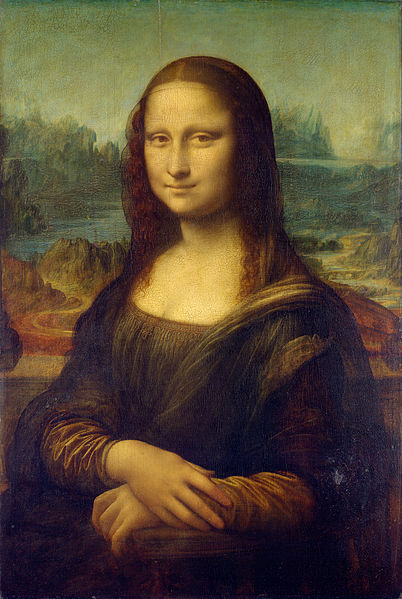
Leonardo and the Duchy of Urbino
The territory that is supposed to be represented on the background of Mona Lisa is known as Montefeltro, the historical region amidst Romagna, Umbria and Marche that formed the Duchy of Urbino, a vassal state of the Church. The Duchy was instituted in 1443 and ruled by Federico da Montefeltro, celebrated both as a brave leader and a generous patron of the arts. His son Guidobaldo was attached by Cesare Borgia, said the Valentino, who conquered the city of Urbino and forced Guidobaldo to flee. The Valentino brought with him Leonardo, who had known at the court of Milano, and charged him to improve the military fortification of the Duchy. In this role, Leonardo had to explore the territory of the Duchy to determine the best places for establishing the fortifications.
Mona Lisa in Montefeltro
The two landscape hunters are now ready for another fascinating, long journey full of pitfalls. Many questions face their minds urging for an answer. The bridge, first of all. This one was built in recent years, certainly it is not the same that appears in the Gioconda. Was there a bridge in the first or second decade of XVI century, when Leonardo is supposed to have painted the Gioconda? Then the shape of the rocks: those painted by Leonardo in the background of Mona Lisa portrait are similar to Alpine heights, very different than the hills of Montefeltro. What has Leonardo represented in the background of his enigmatic portrait?
With tenacity and patience, Rosetta and Olivia find an answer to every question and compose the mosaic. They ask the Centre for Archaeological Medieval Research of the Urbino University about the possibility that a bridge were in that point in the first decades of XVI century. The answer is: yes, there are solid clues that a crossing were there, although direct historical testimonies are missing. They spend the nights to find the vantage point used by Leonardo to paint the landscape and to understand how to conciliate the smooth hills of Valmarecchia with the steep mountains of Mona Lisa. It is a rebus, but they find the solution, eventually. Leonardo was an expert of the perspective. It has represented the first layer of the landscape, the bridge on the right side and the trail on the left side, as a foreground and has used an areal perspective for the second layer, where the strange heights appear. Yes, he has used aerial perspective, they say, to represent the whole territory of Montefeltro.
Bridge of the Gioconda?
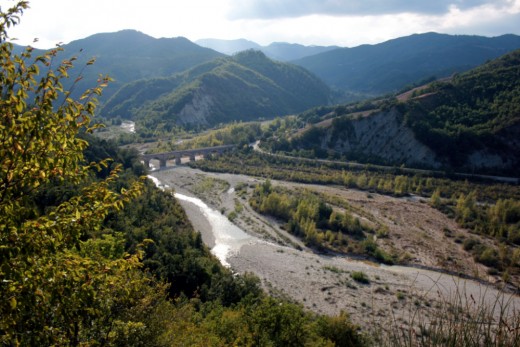
This is one of the two vantage points that Leonardo might have adopted for the landscape of Mona Lisa
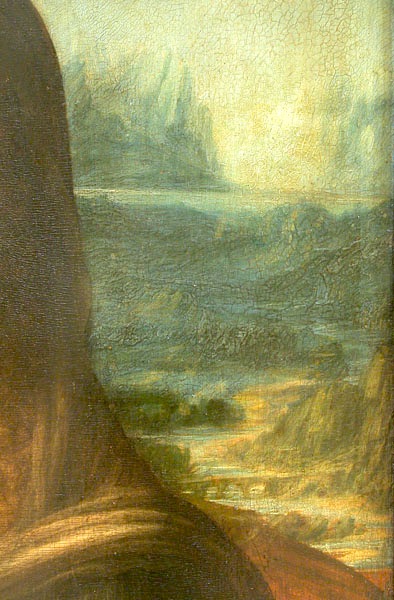
How to Fit a Wide Landscape on a Small Canvas
This is the idea that challenges Rosetta and Olivia. Leonardo has not depicted a portion of the territory, a valley, a river. He has depicted the whole territory of the Duchy of Urbino, viewed bird’s eye from the highest spot of the Valley of Marecchia, the Monte Benedetto. But how he managed to fit this wide territory on a 77 x 53 cm (30.31 x 20.87 in) canvas? The answer of the two scholars is that he used the rules of the perspective to compress the landscape. Leonardo has ascended on the highest peaks in the Val Marecchia to have a vision of the whole territory, he has also used special instruments, such as the Euclid’s baculus, that he had invented, to have a higher observation point and then he has compressed all the territory on the canvas applying rigorously the rules of the perspective. More exactly, he used two different vantage points, one on the right side of the river Marecchia and the other one on the left side, to give a stereoscopic vision of the landscape. Leonardo had knowledge of that territory since he had been there with Cesare Borgia in 1502. Cesare Borgia had attacked the city of Urbino, had taken possess of the Duchy and had appointed Leonardo Superintendent of all the military fortifications of the Duchy. He also had deep knowledge of mathematics and the rules of perspectives, that he had applied in the maps we find in his Codes, some representing exactly the valleys of the Duchy. A final answer remains on the table: why he chose Montefeltro and not the valleys of Tuscany as background to a Florentine woman? To give an answer to this question, the theories of Rosetta and Olivia meet those of another scholar.
Leonardo begun to do for Francesco del Giocondo the portrait of his wife Mona Lisa
— Giorgio Vasari, The Lives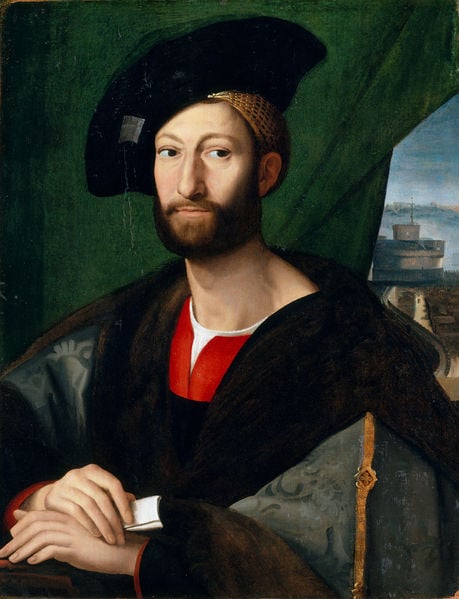
What do you think?
The landscape is Montefeltro and the woman portrayed is not Lisa Gherardini
Mona Lisa or Lady Brandani?
Roberto Zapperi is a historian who has taught at the Ecole des Hautes Etudes in Paris and at the Berlin and Hamburg University. He has published a book in Germany in 2010 to explain his findings about the true identity of the woman that, according to the story told by Vasari, is generally identified with Lisa Gherardini, the wife of the Florentine merchant Francesco del Giocondo, although some other identities have been proposed in the centuries. Roberto Zapperi has conducted a careful study to demonstrate that this identification is false. Vasari had just born when Leonardo was painting Mona Lisa and the painting has always been in France, Vasari reports a version that he had heard by others or even that he had invented by himself, as he had done in other occasions. The story told by Zapperi leads us to the private facts of the Medici family.
We are in Florence. Lorenzo il Magnifico dies in 1492. He leaves three sons: Piero, Giovanni (the future Pope Leo X) and Giuliano. In 1494 the Republic is restored in Florence and the Medici are banned. Giuliano begins a wandering life in Venice and in the courts of Central Italy. He is often accommodated at the Duchy of Urbino. There he has one of his several lovers: Pacifica Brandani, who gives him a son, Ippolito. When Ippolito was born, Giuliano is in Rome, Pacifica is a married woman and she has to entrust the child to an orphanage. After a while she dies. However, the Medici are in shortage of male descendants and Giuliano decides to take the child with him. To commemorate Pacifica, he commissions Leonardo a portrait of the woman. Leonardo has never seen Pacifica, so Giuliano describes him her appearance and the Master, working on the Giuliano’s description, gives life to the most famous and enigmatic smile in the world. Probably, he portrays Pacifica on the background of her territory, the Montefeltro. Giuliano dies too, shortly after. The painting is ready and Leonardo has nothing else to do than taking it with himself to the court of France. He tells the cardinal Luigi d’Aragona, who was in France in 1517, the origin of the painting.
Do you like this story? It might be the true story of the Gioconda. There is still a piece, found by Rosetta and Olivia. In 1515, December, three men are going from Rome to Bologna, to meet the King of France. To reach Bologna, they cross the territory of Montefeltro, the valleys Marecchia and Senatello. These three men are: Giuliano de’ Medici, his brother the pope Leo X and Leonardo da Vinci. If the theory of Rosetta and Olivia is true, it is possible that the landscape of the Gioconda was decided during this journey.
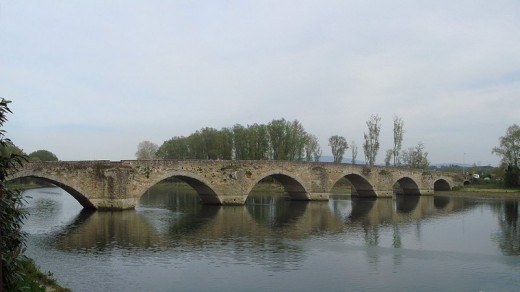
If Mona Lisa’s Landscape Were in Tuscany?
Really, many ancient Italian bridges featuring a donkey’s back shape pretend to be the model for the Gioconda. However, at least one of these, with all the surrounding landscape, is a serious competitor for the bridge upon Marecchia. The inhabitants of Arezzo traditionally claim that the landscape of Mona Lisa represents their territory. In their minds, the bridge that we see on the right side of the painting would be the medieval bridge of Buriano, upon the river Arno in the Val di Chiana, and the left side would depict the channel, inflowing into the Arno nearby the bridge, that collects the waters of the Val di Chiana. If we track the channel upriver, we arrive to an area featuring badlands very similar to the bizarre rocks depicted by Leonardo.
According to other studies, the vantage point for the landscape in the background of Mona Lisa would be in the hamlet of Quarata.
Neither Marecchia, nor Burano, but Bobbio
The debate about the landscape beyond Mona Lisa is still open and the sites claiming to host the famous bridge are increasing. The last pretender to this role is Bobbio, a medieval town on the hills between Piacenza and Genoa, featuring an ancient bridge upon the river Trebbia. The bridge is known as Ponte Gobbo (humpbacked) because of its characteristic shape. According to the art and literature historian Carla Glori, this is the true background of the Gioconda. She first recognized the Ponte Gobbo as the same bridge painted by Leonardo, then, after five years research and the aid of an architectural firm of Piacenza, using a 3D technology she identified the vantage point presumably used by Leonardo and fifteen points in the canvas corresponding to the territory around the river Trebbia. Leonardo would have painted the canvas from a window of the Malaspina Castle, in Bobbio, owned by the Visconti of Milano. If this theory is true, Mona Lisa would be Bianca Giovanna Sforza, the young woman who someone supposes to be the subject of another portrait attributed to Leonardo (La Bella Principessa). Bianca had married Gian Galeazzo Sanseverino, Lord of Bobbio, in 1496 and had died after a few months.
Recent studies have enforced the hypothesis that the Val di Chiana is represented behind Mona Lisa. Though these studies lead to a different conclusion with respect to the research by Rosetta Borchia and Olivia Nesci, curiously they reveal for Leonardo a very similar working method. In fact, also in this case it is clear that Leonardo has applied to the landscape his experience as a cartographer. Leonardo knew the Val di Chiana and he had drawn a detailed map of the area in 1502-1503. We can reconstruct this map by dividing the painting into two parts and then juxtaposing the two opposite edge (i.e. the left edge with the right edge). This shows that Leonardo did not use a linear perspective, but he rendered the whole area of Val di Chiana using what we can call topographic perspective. The most interesting fact is that also these studies conclude that he did not use a single vantage point to represent the whole area, simply because there is not a point that allows to embrace all the area. It may seem incredible, but in a pre-google era Leonardo took a virtual fly on the Val di Chiana and rendered it on the canvas as he would have done with a map, combining a series of aerial vistas. There are a couple of questions: we can admit that this area was familiar to Leonardo, but which relation may it have with the Florentine Lisa Gherardini, if she is the woman portrayed by Leonardo? And why should he have done a so artificial thing such as dividing the landscape into two parts and moving the right part on the left?
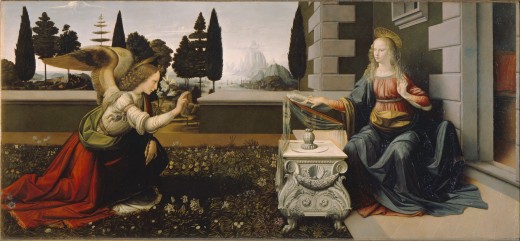
Leonardo’s Love for Steep Peaks
Let us forget the enigma of Mona Lisa and go through other Leonardo’s landscapes. We will be surprised, maybe, to find the presence of steep, rugged rocks in several other paintings featuring likely also the same technique.
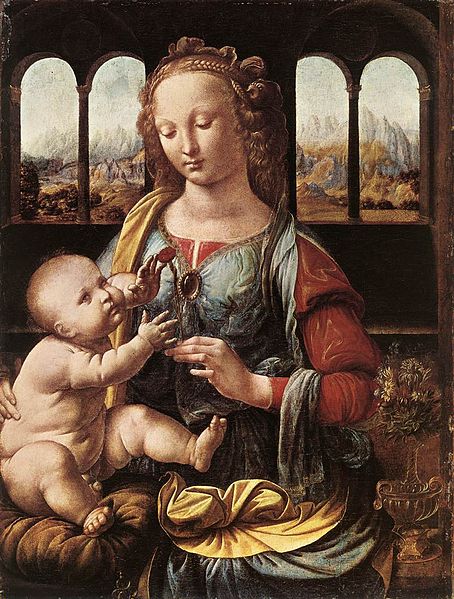
The first of these is the Annunciation (1472). The fascinating landscape in this early work by Leonardo has been much investigated by the scholars. Apparently, it contains the same difficulties that we have found in Mona Lisa. In fact, though there are several particulars that can be identified with the territory of the Valle dell’Arno, where Leonardo spent his childhood (e.g. the mount Monsummano with its characteristic conic shape and the Padule di Fucecchio), a real point of view corresponding to the vista in the painting has not been found. The explanation is that this may be one of the first cases where Leonardo has used an aerial perspective to render the view of a wide territory. The same technique he has used in an almost contemporary work: the Madonna of the Carnation (a. 1473). The landscape in the background is structured on more levels from the valley with some vegetation to the mountains. The aerial perspective is rendered by the use of soft and hazy colours as far as the objects become distant. The same technique that Leonardo has adopted in the Annunciation and in Mona Lisa.
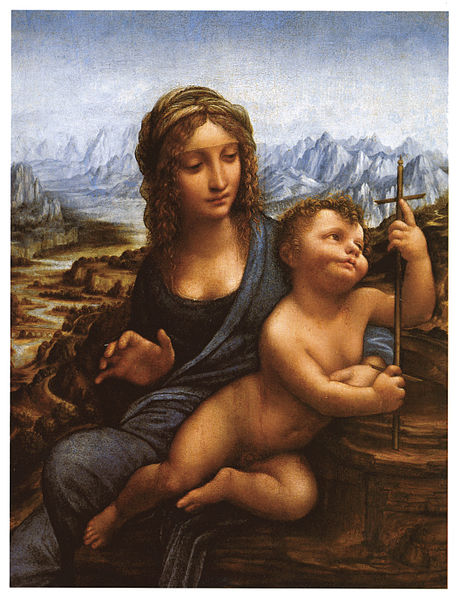
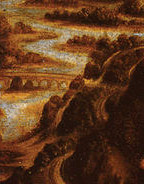
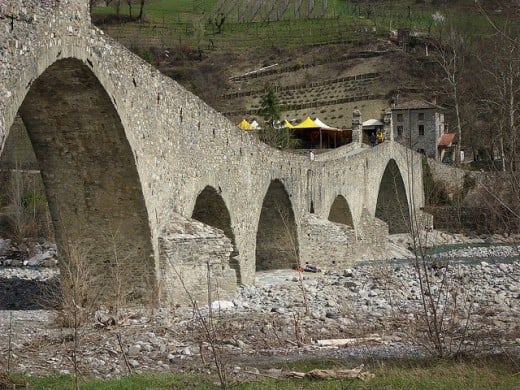
The Only Clue: a Bridge
The Madonna of the Yarnwinder is a painting attributed to the school of Leonardo and dated 1501. There are many versions of this work. One of the most famous belongs to a private collection in New York and probably features a direct intervention by Leonardo. The landscape we admire in the background has been identified with the upper Adda Valley, an area that Leonardo knew very well as he had been military engineer to Ludovico Sforza. He had also represented the area in a map. However, this identification has a problem. There is no evidence of the existence of a bridge upon the river Adda at the time of the painting. Yes, a bridge. The bridge that we see on the left side of the Madonna, a bridge that is dramatically similar to the bridge of Mona Lisa. Moreover, the two landscapes, that one in Mona Lisa and this one, show several analogies, noticed by the scholars, that seem to lead to an obvious conclusion. Mona Lisa and the New York version of the Madonna of Yarnwinder represent the same landscape, from two different perspectives. This is a crucial point, meaning that the two paintings should be studied together, if we want to determine the truth about the location of Mona Lisa’s landscape.
© 2015 Massimo Viola

